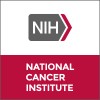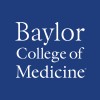
Total Marrow and Lymphoid Irradiation and Chemotherapy Before Donor Transplant in Treating Patients...
Adult Acute Lymphoblastic Leukemia in Complete RemissionAcute Myeloid Leukemia in Remission6 moreThis phase I trial studies the side effects and best dose of total bone marrow and lymphoid irradiation when given together with chemotherapy before donor stem cell transplant in treating patients with myelodysplastic syndrome or acute leukemia. Total marrow and lymphoid irradiation is a type of radiation therapy that targets bone marrow and blood, where the cancer is, instead of applying radiation to the whole body. Stem cell transplants use high doses of chemotherapy and radiation therapy, such as total marrow and lymphoid irradiation, to kill cancer cells, but these treatments kill normal cells as well. After chemotherapy, healthy cells from a donor are given to the patient to help the patient grow new blood cells.

Randomized Phase II Trial of Rituximab With Either Pentostatin or Bendamustine for Multiply Relapsed...
Hairy Cell LeukemiaBackground: Researchers are attempting to develop new treatments for hairy cell leukemia (HCL) that has not responded well to or has recurred after standard HCL therapies. One nonstandard treatment for HCL is rituximab, an antibody that binds to the cancer cells and helps the immune system destroy them. By combining rituximab with other anti-cancer drugs, researchers hope to determine whether the combined drugs are successful in treating HCL. Pentostatin and bendamustine are two anti-cancer drugs that have been used to treat different kinds of blood and immune system cancers. Bendamustine is approved to treat other kinds of leukemia and lymphoma, but it has not been used to treat HCL. Pentostatin has been used for more than 20 years to treat HCL, but it has not been combined with rituximab in official clinical trials. Objectives: To determine whether rituximab with either pentostatin or bendamustine is a more effective treatment for HCL than rituximab alone. To determine whether pentostatin or bendamustine is a more effective treatment for HCL when combined with rituximab. Eligibility: - Individuals at least 18 years of age who have been diagnosed with hairy cell leukemia that has not responded well to or has relapsed after standard HCL therapies. Design: The study will last for four treatment cycles of 28 days each. Prior to the study, participants will be screened with a full medical history and physical exam, bone marrow biopsy (if one has not been performed in the last 6 months), computed tomography (CT) or ultrasound scan, tumor measurements, and other tests as required by the researchers. Participants will provide blood and urine samples at this time as well. Rituximab with bendamustine: Participants will receive rituximab on Days 1 and 15 of each cycle and bendamustine on Days 1 and 2 of each cycle, for a total of four cycles. Rituximab with pentostatin: Participants will receive rituximab on Days 1 and 15 of each cycle and pentostatin on rituximab on Days 1 and 15 of each cycle, for a total of four cycles. Participants will have regular tests during the treatment cycles, including bone marrow biopsies and CT or ultrasound scans. Participants will also provide regular blood and urine samples to assess the results of treatment.

T-cells or EBV Specific CTLs, Advanced B-Cell NHL and CLL
Non-Hodgkin LymphomaChronic Lymphocytic LeukemiaPatients on this study have a type of lymph gland cancer called non-Hodgkin Lymphoma or chronic Lymphocytic Leukemia. Their lymphoma or CLL has come back or has not gone away after treatment. Because there is no standard treatment for the cancer at this time or because the currently used treatments do not work fully in all cases, patients are being asked to volunteer to take part in a gene transfer research study using special immune cells. The body has different ways of fighting infection and disease. No single way seems perfect for fighting cancers. This research study combines two different ways of fighting disease: antibodies and T cells. Antibodies are types of proteins that protect the body from infectious diseases and possibly cancer. T cells, also called T lymphocytes, are special infection-fighting blood cells that can kill other cells, including cells infected with viruses and tumor cells. Both antibodies and T cells have been used to treat patients with cancers. They have shown promise, but have not been strong enough to cure most patients. The antibody used in this study is called anti-CD19. This antibody sticks to lymphoma cells because of a substance on the outside of these cells called CD19. CD19 antibodies have been used to treat people with lymphoma and CLL. For this study, the anti-CD19 antibody has been changed so that instead of floating free in the blood it is now attached to T cells. When an antibody is joined to a T cell in this way it is called a chimeric receptor. These chimeric receptor-T cells seem to be able to kill tumors, but they don't last very long and so their chances of fighting the cancer are limited. Investigators found that T cells work better if they also attach a protein called CD28 to the T cells. This protein makes the T cells more active and survive longer. Also they found that T cells that are also trained to recognize the virus that causes infectious mononucleosis (called Epstein Barr Virus or EBV) can stay in the blood stream for many years. These CD19-CD28 chimeric receptor T cells and CD19 chimeric-EBV specific T cells are investigational products not approved by the FDA. The purpose of this study is to find the biggest dose of chimeric T cells that is safe to administer, to see how long each of the T cell populations (CD19-CD28 and CD19-EBV-specific) last, to assess what the side effects are, and to evaluate whether this therapy might help people with lymphoma or CLL.

Donor Peripheral Stem Cell Transplant in Treating Patients With Advanced Hematologic Cancer or Other...
Chronic Myeloproliferative DisordersGraft Versus Host Disease6 moreRATIONALE: Giving chemotherapy and total-body irradiation before a donor peripheral stem cell transplant helps stop the growth of cancer or abnormal cells. It also helps stop the patient's immune system from rejecting the donor's stem cells. When the healthy stem cells from a donor are infused into the patient they may help the patient's bone marrow make stem cells, red blood cells, white blood cells, and platelets. Sometimes the transplanted cells from a donor can make an immune response against the body's normal cells. Giving tacrolimus, methotrexate, cyclosporine, mycophenolate mofetil, and sirolimus before and after transplant may stop this from happening. PURPOSE: This phase II trial is studying how well donor peripheral stem cell transplant works in treating patients with advanced hematologic cancer or other disorders.

Treatment of Relapsed or Chemotherapy Refractory Chronic Lymphocytic Leukemia or Indolent B Cell...
LeukemiaRATIONALE: Using T cells from the patient that have been treated in the laboratory may help the body build an effective immune response to kill cancer cells. Drugs used in chemotherapy, such as cyclophosphamide, work in different ways to stop the growth of cancer cells, either by killing the cells or by stopping them from dividing. Giving laboratory-treated T cells together with cyclophosphamide may kill more cancer cells. PURPOSE: This is a two-stage protocol, consisting of a single-institution phase I safety study and multi-institution phase IIa extension study.

A Study of Ibrutinib + Obinutuzumab in Patients With Relapsed or Refractory Chronic Lymphocytic...
Chronic Lymphocytic LeukemiaThis research study is evaluating a combination of two drugs, ibrutinib and obinutuzumab, as a possible treatment for Chronic Lymphocytic Leukemia (CLL).

A Biomarker-Directed Phase 2 Trial of SY-1425 in Patients With Acute Myeloid Leukemia or Myelodysplastic...
Acute Myeloid LeukemiaMyelodysplastic SyndromeThe purpose of this study is to determine the activity of SY-1425 in relapsed/refractory acute myeloid leukemia (AML) patients (SY-1425 administered as a monotherapy or in combination with azacitidine), relapsed/refractory higher-risk myelodysplastic syndrome (MDS) patients (SY-1425 administered as a monotherapy or in combination with daratumumab), newly diagnosed treatment naïve AML patients who are unlikely to tolerate standard intensive chemotherapy (SY-1425 administered as a monotherapy or in combination with azacitidine), or lower-risk myelodysplastic syndrome (MDS) patients (SY-1425 administered as a monotherapy).

Guadecitabine and Donor Lymphocyte Infusion in Treating Patients With Acute Myeloid Leukemia or...
Acute Myeloid LeukemiaChronic Myelomonocytic Leukemia3 moreThis phase IIa trial studies how well guadecitabine works in treating patients with acute myelogenous leukemia and myelodysplastic syndrome that has returned after a period of improvement after allogeneic stem cell transplant. Guadecitabine may stop the growth of cancer cells by blocking some of the enzymes needed for cell growth. Sometimes the transplanted cells from a donor can make an immune response against the body's normal cells (called graft-versus-host disease). Giving guadecitabine before the transplant may stop this from happening. Once the donated stem cells begin working, the patient's immune system may see the remaining cancer cells as not belonging in the patient's body and destroy them. Giving an infusion of the donor's white blood cells (donor lymphocyte infusion) may boost this effect.

A Novel "Pediatric-Inspired" Regimen With Reduced Myelosuppressive Drugs for Adults (Aged 18-60)...
LeukemiaThe purpose of the study is to find out whether the combination of chemotherapy drugs that are routinely used in children with ALL, will be safe and effective in treating adult patients with ALL. The standard treatment for adults with ALL consists of many chemotherapy drugs that are given in different combinations and in several steps. In adult ALL there is no standard which drugs to give and how to combine them. Some leukemias have a chromosome abnormality called Philadelphia chromosome (also called Ph Positive) and some leukemias do not (called Ph Negative). In this study we want to see whether this combination of chemotherapy drugs will be safe and effective in treating adult patients with Ph Negative ALL.

Treatment-free Remission After Achieving Sustained MR4.5 on Nilotinib (ENESTop)
Chronic Myeloid LeukemiaA clinical research study to find out if it is safe to stop the drug nilotinib (Tasigna) in chronic myeloid leukemia (CML) patients. Patients who started treatment with imatinib (Gleevec) when they were first diagnosed with CML, then switched to nilotinib (Tasigna) for at least 2 years with the combined time on imatinib (Gleevec) and nilotinib (Tasigna) for at least 3 years and have very small amount of leukemia cells remaining after the nilotinib (Tasigna) treatment will qualify for the study.
